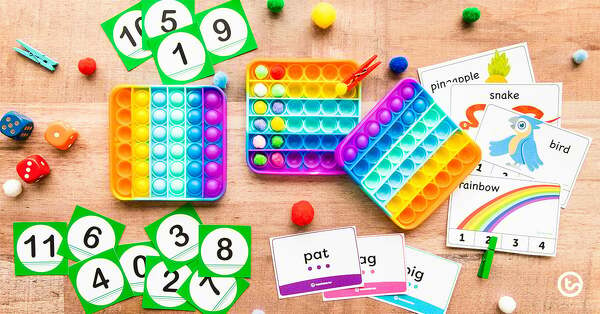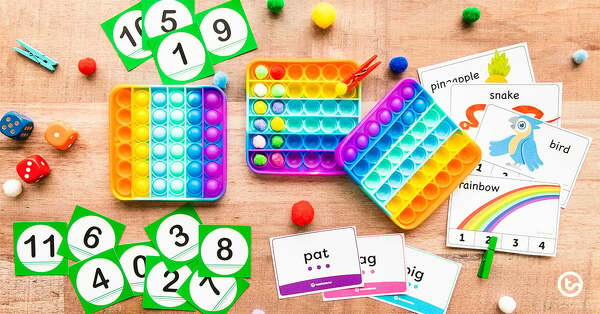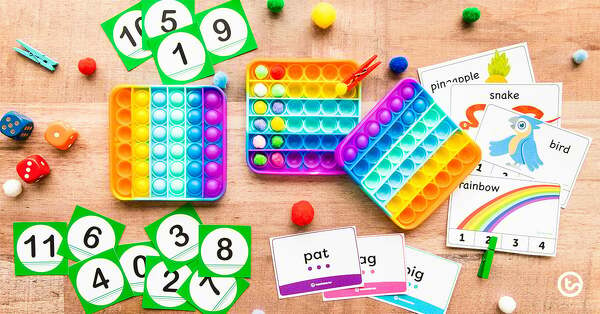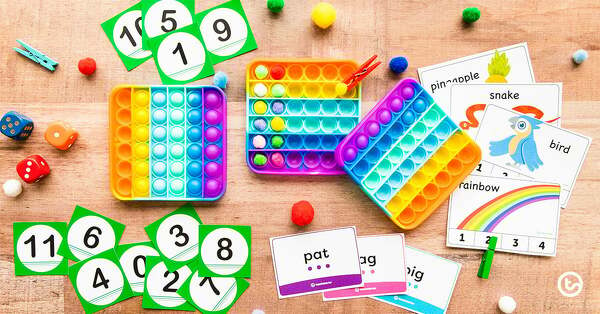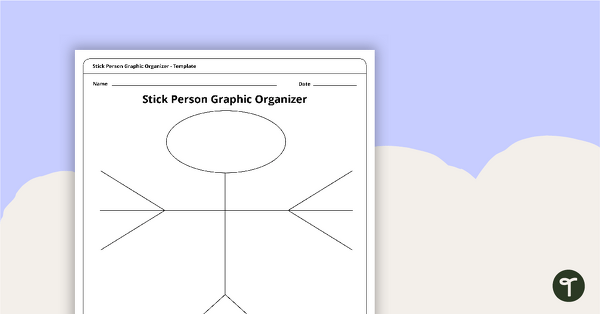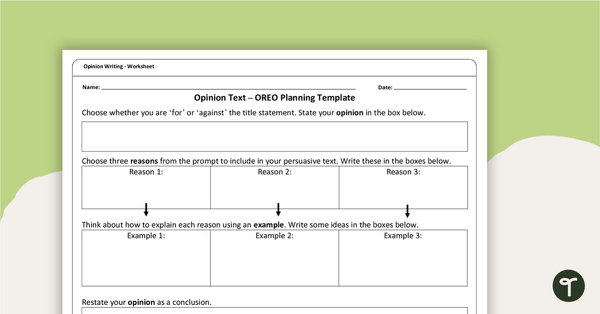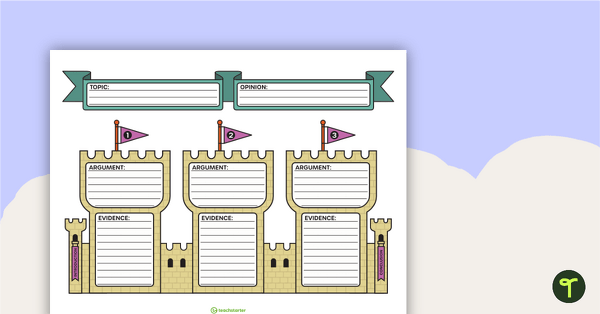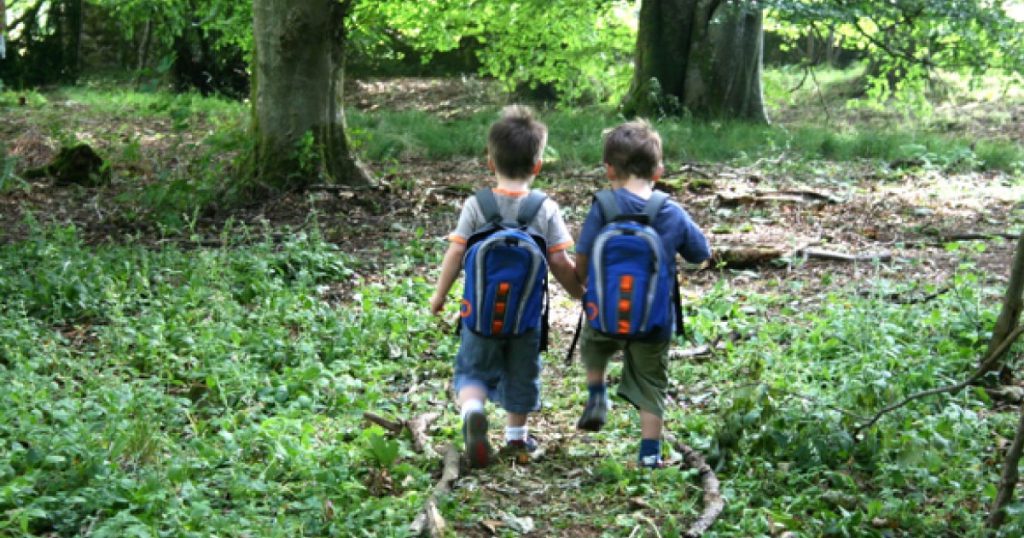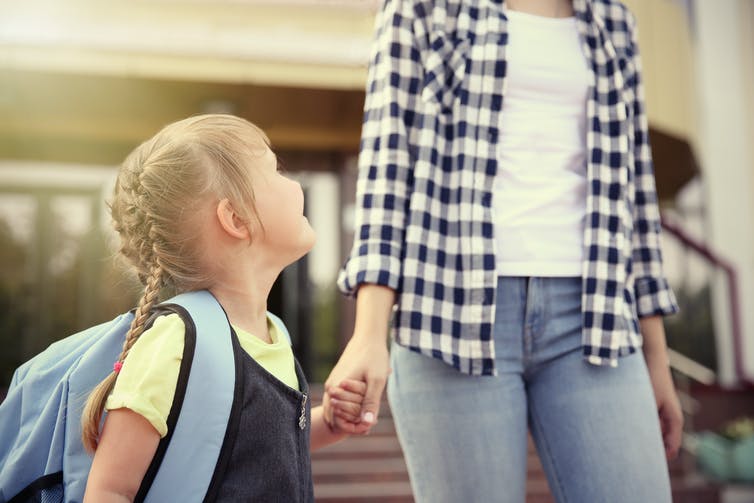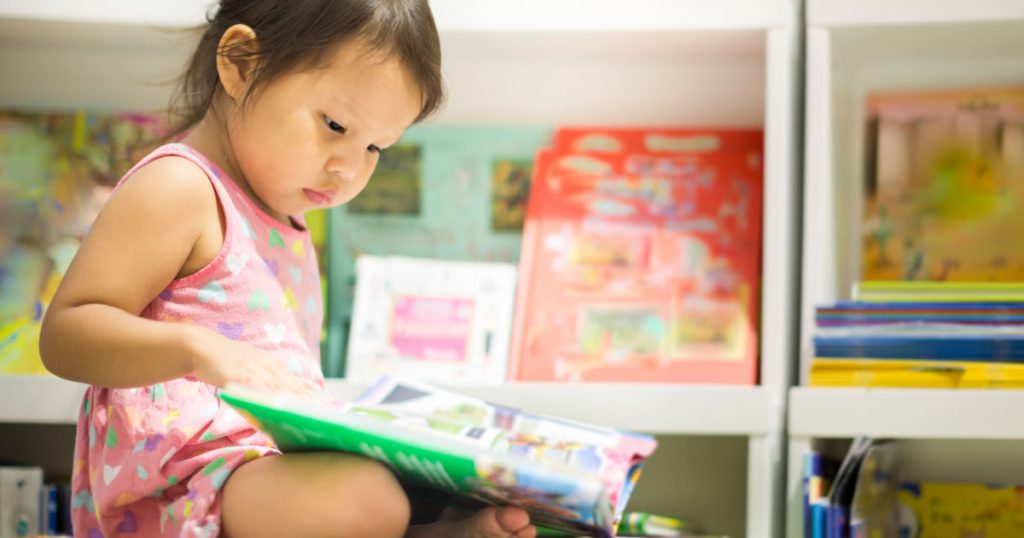Nope teachers, it’s not your champagne popping on Friday night! This new craze sweeping across elementary school classrooms has been dubbed the next fidget spinner. Whether you call it a Pop It, a popping fidget toy, a push bubble, or a fidget popper, this sensory toy that has little ‘bubbles’ that you can push through and ‘pop’, kind of like bubble wrap! They were initially designed to provide a sensory and tactile experience to help children who may benefit from extra assistance to focus. But, like the fidget spinner, these Pop Its are quickly becoming a favorite toy for every kid. Now, most households across the country are home to a variety of colored popping toys in a wide array of shapes.
Do you give Pop Its the thumbs up or thumbs down?
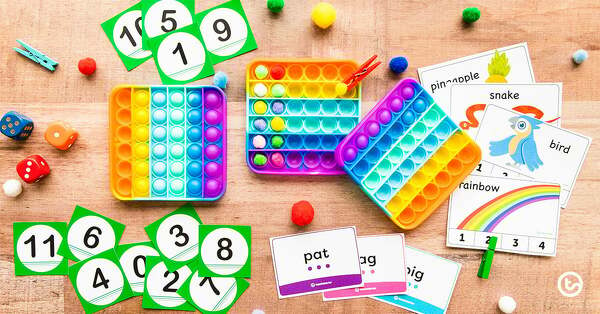
Shutterstock.com / Asier Romero
OK, you may be sick of these new fidget toys in your classroom… sick of seeing them, sick of hearing them, or just sick of them in general?
But, why not use this student obsession to your advantage in the classroom? We have brainstormed a number of fantastic activities that you could incorporate into your math centers, reading centers, or classroom brain breaks for a little bit of fun.
(Of course, they can still be used in the classroom as a fidget toy for those that really need it.)
(1) Segmenting Phonemes
Use our Phoneme Segmentation Flashcards, and have students push down on a ‘bubble’ for each phoneme they say.
(2) Explore Syllables in Words
Use our Syllable Clip Cards for a fantastic hands-on activity.
Students pick a card and clap out the syllables, next they push on a ‘bubble’ for each syllable. Finally, they can put a clothespin on the correct number of syllables on the cards. Fine motor, repetition, and syllables all in one – genius!
(3) CVC Activity
Use our CVC Word Building activity for some fantastic CVC image cards and matching letters. Students can pick an image, find the matching letters to create the matching CVC words and then use the ‘buttons’ on the Pop It to sound out the word.
Some teachers are experimenting with using a Sharpie to write letters on each of the bubbles on the Pop Its, too!
(4) Pom-Pom Match
Okay, we got a little excited when we figured out that the little pom-poms you can buy fit perfectly in the ‘bubble’ when flipped upside down.
Using tongs or clothespins, students need to pick up pom-poms and fill up every bubble of the Pop It. Think about what muscles your students need development in; the opening and closing of tongs and clothespins use different muscles.
Even the general ‘popping’ of this fidget toy is good for general fine motor skills too…
(5) Skip Counting
Reinforce your students’ knowledge of skip counting by using a Pop It. Students can push down on a bubble as they count by 1s, 2s, 5s, 10s, etc.
(6) Simple Addition
All you need is a push bubble toy and two dice for a simple addition activity. Students can roll the dice and then push down the number of bubbles on the Pop It to show the total.
(7) Simple Number Recognition
Students roll a die and then push that many bubbles on the Pop It. A great number recognition activity for early learning.
For larger numbers, you could use some Number Flashcards in a similar way.
(8) Simple Coding
Use our coding direction cards for a fun activity for your little coders. Place two mini objects in a Pop It (upside down). In pairs, one student needs to use the direction cards to explain to the other student how to get from one object to the other.
(9) Coordinates
On a piece of paper, write down coordinates to add to the outside of a Pop It. In pairs, one student can add a pom-pom to one bubble and the other student needs to provide the coordinate for that pom-pom. You could even give them a coordinate, and direct them to find that bubble and put a pom-pom on that coordinate.
Why not replicate Battleship for your older students?
(10) Arrays
Using simple multiplication facts, students need to show the multiplication fact using arrays by pushing down the correct number of bubbles to find the product.
You may like to use our collection of Hooray Arrays worksheets in conjunction with this activity:
(11) Memory
In pairs, students use one Pop It and a couple of small items that will fit nicely under the ‘bubbles’, anything like pom-poms, rocks, buttons, or beads. One student needs to look at what is under the Pop It and then place it back down and close their eyes. The other partner removes one item and then places the Pop It back down.
The first student needs to work out what item has been removed.
(12) Follow a Pattern
In pairs, one student creates a pattern with the popping bubble toy – it may be pushing down one bubble, then two bubbles, then one… etc. The other student then needs to deduce the ‘rule’ for the pattern and repeat it.
(13) Persuasive Writing
Have your students write a persuasive letter convincing you or the principal that students should or should not be allowed to bring Pop Its to school.
You may like to use our persuasive planning templates to help your students plan out their arguments.
(14) Pop It Game
This is a great game for the students to play during a brain break or even for a warm-up.
You play this game in pairs. Each pair will have a push bubble fidget toy. The first player pops down as many ‘bubbles’ as they want, though it must be in the same line. The next player goes and does the same thing, they can pop as many or as little as they like, but it must be within a line. The aim of the game is to NOT be the last player popping a bubble. For those on TikTok – check out this video from @tipsfromatypicalmom.
We’d love to hear from you! Have you banned Pop Its in your classroom?
The post 14 Educational Ways to Use Popping Fidget Toys in the Classroom appeared first on Teach Starter.

